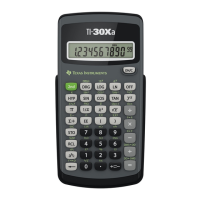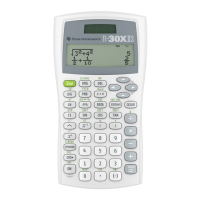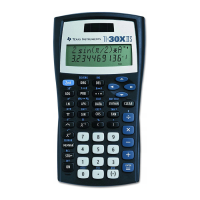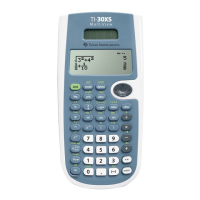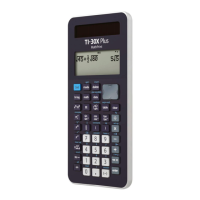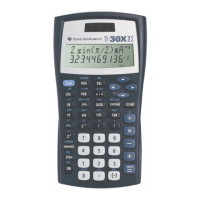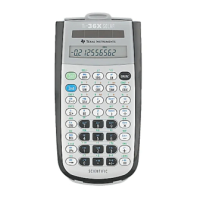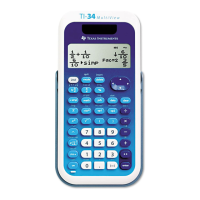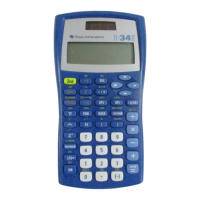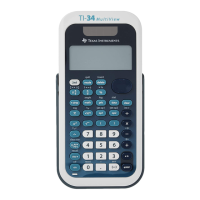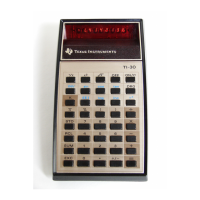
Do you have a question about the Texas Instruments TI-30XIIB and is the answer not in the manual?
| Brand | Texas Instruments |
|---|---|
| Model | TI-30XIIB |
| Category | Calculator |
| Language | English |
Lists key features and capabilities of the TI-30 calculator, including its circuitry, keyboard, and power-saving modes.
Details how to install a 9-volt battery, recommended types, and signs of a discharged battery.
Explains ON/C, OFF, Digit, Decimal Point, and Change Sign keys for fundamental calculator operation and control.
Describes the function of the Pi key and basic arithmetic operation keys (+, -, x, ÷, =).
Introduces keys for constant calculations, expression grouping, and exponentiation/root operations.
Covers keys for natural/common logarithms and the DRG key for setting angular measurement modes.
Details Sine, Cosine, Tangent, their inverse functions, and the Exponent Entry key.
Explains STO, RCL, SUM, and EXC keys for storing, retrieving, and manipulating data in memory.
Instructions for powering on the calculator and understanding the initial display indicators.
Covers the automatic power-off feature and how to enter numerical data with a floating decimal point.
Explains how to clear entries and introduces the concept of scientific notation for large/small numbers.
Details the procedure for entering numbers in scientific notation and managing exponents.
Describes how to adjust the exponent and decimal point of a displayed number without changing its value.
Lists common error messages, their causes, and how to clear them to resume calculations.
Explains how to perform addition, subtraction, multiplication, and division using algebraic entry.
Provides methods for correcting incorrect number or operation entries during calculations.
Shows how to use the result of one calculation as input for the next without re-entering.
Explains the order of operations (priority rules) the calculator follows for interpreting expressions.
Details how to use parentheses to control calculation order and isolate expressions.
Describes the constant feature for simplifying repetitive mathematical sequences.
Explains how the calculator maintains accuracy and applies rounding rules to displayed results.
Explains the use of square, square root, and universal power/root keys (y^x, V y).
Details the 1/x reciprocal key and percentage calculations, including add-on and discount.
Covers the Inx (natural log) and INV Inx (e^x) functions for exponential and logarithmic calculations.
Explains the log (common log) and INV log (10^x) functions for base-10 calculations.
Introduces sine, cosine, tangent functions and the DRG key for angular mode selection.
Provides key sequences for converting angles between degrees, radians, and grads.
Explains how to compute hyperbolic sine, cosine, and tangent using exponential functions.
Details the STO and RCL keys for saving and retrieving values from the calculator's memory.
Describes the SUM key for adding values to memory, useful for accumulating results.
Explains the EXC key for exchanging the displayed value with the content stored in memory.
Shows how to directly calculate expressions involving sums of products or quotients.
Explains calculations involving products or quotients of sums, often requiring parentheses.
Provides the formula and steps to find the roots of quadratic equations (ax² + bx + c = 0).
Lists conversion factors for units between English and Metric systems, and formulas for temperature conversion.
Lists various general conversion factors for different units.
Provides formulas for circumference, area, and volume of various geometric shapes.
Lists fundamental trigonometric identities, relations, and the Law of Cosines.
Summarizes basic rules and properties for exponents and logarithms.
Offers troubleshooting steps for common calculator problems and guidance on what to do if difficulties persist.
Information on how to exchange calculators and contact service departments for assistance.
